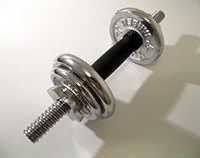Despite plenty of encouragement from the government and health experts to move more, Americans still find it hard to adopt a less sedentary lifestyle.
Merely 20 percent are in compliance with the government’s recommendations for physical activity, which advise getting at least 2½ hours per week of moderately intense aerobic exercise like brisk walking as well as some strength training such as lifting weights or doing pushups.
Disparities make it difficult
The Physical Activity Guidelines for Americans, issued by the U.S. Department of Health and Human Services (HHS), call being physically active “one of the most important steps that Americans of all ages can take to improve their health.”
The Physical Activity Guidelines are meant to complement the Dietary Guidelines for Americans, a joint effort of the HHS and the U.S. Department of Agriculture (USDA). They are directed towards policy makers and health care professionals as well as the public at large.
According to a recent survey conducted by the Centers for Disease Control and Prevention (CDC) and published in the May 2013 issue of the journal Morbidity and Mortality Weekly Report, 52 percent of respondents to phone interviews reported meeting the recommended guidelines for aerobics, and 29 percent said they did with muscle-strength training.
The survey also came up with some other noticeable statistics. Less than a third of 18 to 24 year-olds met both aerobic and strength-training recommendations. Only 16 percent of over 65 year-olds came close. Hispanics did worse than other ethnicities. Education also seemed a contributing factor.
Those with college degrees did on average better than those without. Normal-weight persons were more active than the overweight and obese. Americans living in the Northeast and the West outperformed Southerners. Colorado beat all other states. West Virginia and Tennessee came in last.
Similarly to the Dietary Guidelines, the Physical Activity Guidelines have been criticized as unrealistic and unattainable for many Americans, especially for low-income earners and those living in unwalkable and unsafe neighborhoods.
Multiple studies have shown that walkability in residential areas has a significant impact on people’s health. One study found that residents of neighborhoods with sidewalks, bike paths and public parks had a much lower risk of becoming overweight or obese than those who lived in areas without such amenities.
Walk, bike?
But unfortunately, issues of walk-ability and bike-ability are still not included in the planning processes of many cities around the country. Walk Score, a Seattle-based company that evaluates major cities and mid-sized towns in the U.S., releases annual rankings of the most, and least, walkable places and rates them on a scale from 0 (= “car-dependent”) to 100 (= “walker’s paradise”).
While New York City and San Francisco routinely qualify as most pedestrian-friendly and are lauded for their extensive public transportation system, smaller towns, especially in rural areas, still make it hard to get around other than by driving your own vehicle.
Physical fitness – like weight control – is considered by many as a matter of personal choice and responsibility. And to a certain extent that is true. However, other factors such as income, residence, access to grocery outlets and opportunities to be physically active within reasonable distance have all been shown to be decisive. If too many of these elements are missing, no appeal to behavioral change will suffice.
Timi Gustafson R.D. is a registered dietitian, newspaper columnist, blogger and author of the book “The Healthy Diner – How to Eat Right and Still Have Fun”®, which is available on her blog and at amazon.com. For more articles on nutrition, health and lifestyle, visit her blog, “Food and Health with Timi Gustafson R.D.” (www.timigustafson.com). You can follow Timi on Twitter, on Facebook, and on Pinterest.


